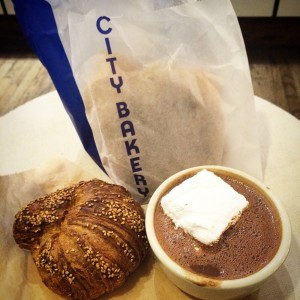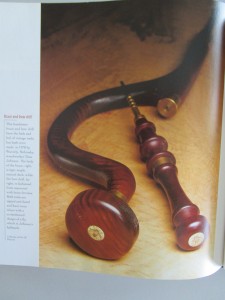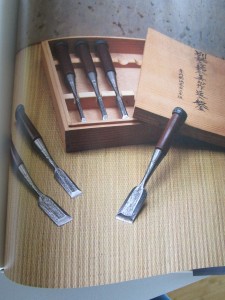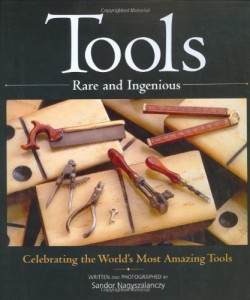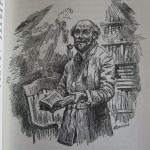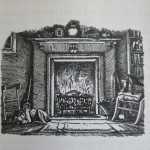Gift Idea for the Baker
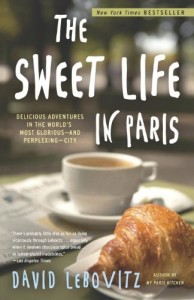 The Sweet Life in Paris
The Sweet Life in Paris
By David Lebovitz
I’ve been busy baking for the holidays. I’m not a baker, but there’s a couple of traditional holiday treats I bake to send to family and give to friends. As Husband and I cleaned up the mess – (powdered sugar is such a beast)…I remembered this book which lives happily on my books to keep shelves.
David Lebovitz is a well-renowned pastry chef and baker from here in the Bay Area (of Chez Panisse fame) who moved to Paris.
The Sweet Life in Paris is a collection of recipes interspersed with reflections on his adopted city. The observations about Paris are wonderful, his grumpy view of American tourists with their fanny packs and flip flops — to his very funny riff on French men in their “religion revealing” bathing suits. He also writes unflinchingly about the frustrations of living in Paris. He can’t get a visa without first opening a bank account, and the banks won’t open an account without a visa, as it requires extra paperwork. (He ends up bribing a friend of friend who works at bank with box of chocolates.)
“Unlike in America, where everyone is taught to say yes, in France, oui means more work.”
Mr. Lebovitz is confounded by the frequent French workers strikes and angry at Parisian’s inability to wait in line at the grocery store
“In Paris there are only two reason you can cut in front of others waiting in line:
1. Because you are old, frail, or have a physical disability that prevents you from standing for long periods of time.
2. Because you don’t think you should have to wait in line behind anyone else.”
There are the Parisian shopkeepers who would rather smoke outside than sell you cheese that you are obviously unworthy of, the mind-numbing process of returning an item that broke with its first use and the alarming pedestrian pushing
But the curmudgeonly writing can’t hide the author’s true love of Paris and especially its culinary delights — the chocolate shops and their beautifully artistic offerings, out of the way cafes that serve simple steak aux pomme frites, the bakers who work through the night catering to the French demand for their morning croissants and afternoon baguettes.
There’s one chapter (and a recipe thank goodness) called “Hot Chocolate to Die For”, which will cause you to run to the kitchen to unearth some baking chocolate and whole milk.
And the recipes — mon deux! — just listen to these temptations … Chocolate Macaroons, Breton Cake with Fleur de Sel, Dulce de Leche Brownies and there’s even a Caramelized Apple Tart which is supposedly low fat.
But I found the most valuable pages are his appendix of favorite places in Paris for baked goods — the best croissant in Paris (why yes — yes please) –not to mention the best chocolate shops – priceless
This is delightful and funny book filled with the charms and eccentricity of Paris. But the main reason to get this The Sweet Life in Paris is as a “gift” for your favorite baker — and secretly hope you’ll get to share in the results.
N.B. The author reveals his favorite place in New York City – City Bakery for salted croissants and thick hot chocolate with a homemade marshmallow. Just look at this – possibly worth the 3,000 mile trip.
Gift Idea for the Fashionista
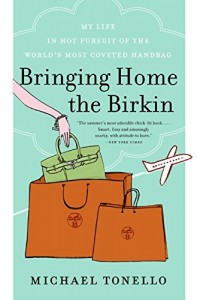 Bringing Home the Birkin
Bringing Home the Birkin
by Michael Tonello
My Life in Hot Pursuit of the World’s Most Coveted Handbag
In the words of Monty Python …
and now for something completely different.
If you could see me right now in ratty jeans and a favorite soft sweatshirt found at Goodwill, you’d seriously question why I would read, let alone recommend, this book.
And you’d be right, I could care less about designer clothing labels or bling from Tiffany’s — but I do have a weakness for a good bag. (There was an incident at a Coach factory store in New Hampshire [no sales tax], where mid purchase, my credit card company shut me down thinking my card was in the hands of a thief on a spending spree — but the incident was all sorted out and we shall speak no further of it.)
 Back it in the 90’s, Hermès was known for their coveted Birkin handbags – and the infamous five year waiting list to obtain one of the bags. This urban myth was perpetuated through the cultural icons of the time such as a Sex and the City episode and Victoria Beckham’s astonishing pink Birkin. They were (and still are – just checked eBay – yikes) the ultimate elite status symbol.
Back it in the 90’s, Hermès was known for their coveted Birkin handbags – and the infamous five year waiting list to obtain one of the bags. This urban myth was perpetuated through the cultural icons of the time such as a Sex and the City episode and Victoria Beckham’s astonishing pink Birkin. They were (and still are – just checked eBay – yikes) the ultimate elite status symbol.
At a starting price of $8,000, a Birkin is well beyond my means or my conscious. But still, a girl can dream right?
That’s why I stopped short when I came across Bringing Home the Birkin. I found myself turning the pages, warily thinking — this is not the book for me, I’ll just read a little bit…and before I knew it, I was enthralled by this frothy, engaging and funny tale.
Michael Tonello moves from Cape Cod to Barcelona, Spain, but once there the job he has lined up, falls through. Having fallen for both Barcelona and a new man, Mr. Tonello turns in desperation to his favorite pastime — shopping, which leads him into Hermès stores where he buys scarves to resell (at a very good profit) on e-Bay. When one of his scarf buyers asks him to obtain a Birkin, (at any price) he takes on the challenge.
This proves to be a formidable task as Hermès made sure the Birkin bag remained ultra exclusive, by instituting a waiting list with high-profile customers, limiting the number of Birkins sold to each customer and putting a “reserved” sign on display bags.
Mr. Tonello riffs on the likelihood of the “reserved” ploy with this passage:
I could only imagine the conversation: “Oh yeah, the croc Birkin, right, great. But I only have half the money now, — repairs on the yacht this week you know how it is…don’t sell it, just put in the window, pop a reserved sign on it or something. I’ll send the chauffeur by with the other half by next Sunday at the latest — Great great. You guys are the best…”
Hermès‘ strategy worked and customers fell for it–blinded by the rarity and social status. Mr. Tonello knew this human failing only too well and he finds it fairly easily to obtain numerous bags, but only after he develops a buying formula, a special outfit (!) and profiles of typical Hermès sales personnel in order to befriend them (one of the funniest sections of the book are these employee “profiles” – and their accompanying illustrations). He journeys to Luxembourg, Capri, Santiago, Paris –all in search of Birkins, which he sells at a tidy profit to his shamefully rich clients.
Just when this tale of over the top consumerism is almost getting to be too much, a family tragedy causes Mr. Tonello to examine his conscious. He reflects on what is actually important in life and discovers he can no longer deal with “people who lacked for nothing, but who longed for more”.
With that said, Bringing Home the Birkin is not high moral reading. This is a guilty pleasure — a fun peek into the world of high fashion, high stakes shopping and the extraordinarily rich. But it also shines with beautiful locations, great hotels, top restaurants — and most of all the fascinating, funny and outrageous Michael Tonnello.
+++++++++++++++++++++++++++++++++++++++++++
Why is it called a Birken? Well the story goes that Jane Birkin was flying from London to Paris in 1981 when she reached into her bag for her datebook and everything fell out. “I’d love a bag with pockets,” the English singer/actress told her seatmate. Her seatmate just happened to the chairman of Hermès. He was a good listener. He had his designers make not only a bag with pockets, but also a spill-proof closure. He sent one to Birkin and then he named it after her.
Gift Idea for the Handyman
 The Art of Fine Tools
The Art of Fine Tools
by Sandor Nagyszalanczy
Everyone has a handyman (OK handy person) in their life. You know, that someone you call when the faucet is dripping or to fix a cabinet door. It may be a neighbor, a friend ( a very good friend) or if you’re like me, your partner.
Husband has a workroom chocked full of tools and his favorite destination is Home Depot or OSH — so getting him a tool for Christmas is always a bust – because, of course, he already has it. So naturally, I give him books and several years ago, The Art of Fine Tools was one of my best gift scores. When I asked him why he replied,
“well, it’s not a very practical book but I love it, it’s just — it’s just — well, okay it’s tool porn.”
Nagyszalanczy begins his book with this simple, declarative statement:
“A well made tool is a thing of beauty that’s as much a pleasure to look at as it is to use.”
The quality of the images is indeed simply beautiful, even to me, who uses a screwdriver to pry nails. These are rare and magnificent woodworking tools –including Japanese tools and Paul Hamler’s (?) collection of miniature tools. The text nicely explains the tools, their provenance, owners and usage.
You have to take a look inside…excuse my photos – they don’t do the book justice.
As I leafed through the pages to prepare this post, I realized Husband was absolutely right – this is unadulterated tool porn. It seems wrong that innocent tools are exploited like this, but your handy person will love it.
Turns out Mr. Nagyszalanczy (don’t you love that name?) has crafted (crafted, ha-ha I just crack myself up) a second book, which Husband doesn’t have. Luckily, Husband isn’t a Book Barmy follower, so I’ve got his present crossed off my list.
Gift Ideas for a Book Lover
Why, oh why, would I choose my first entry in the 12 Days of Book Barmy Gift Ideas for the Booklover in your life?
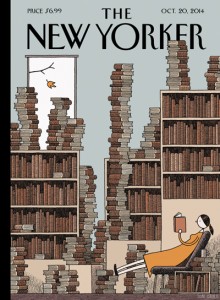 Because you need time and stealth. First, you need to invite yourselves over to their home and while they make the tea (or margaritas, however you and your friends roll) covertly scan their bookcases for the titles below.
Because you need time and stealth. First, you need to invite yourselves over to their home and while they make the tea (or margaritas, however you and your friends roll) covertly scan their bookcases for the titles below.
You see, the Booklover in you life has likely read most everything — they sneer at the quickly-found bestsellers, probably own most of the well-known classics, and in short, are the most difficult person on your gift list. So with great thought, I am recommending two books that are somewhat lesser known…in the hope that you can surprise them.
These books may require some work, a trip to your local used bookstore or independent bookstore may result in actual copies on the shelf or an order will put them in your hands shortly. The chains or big box stores will not stock these — don’t even try. Even the big A has a really paltry selection of editions.
HERE is a link to find your local independent bookstore. And in an shameless plug for local independents, get a gift receipt. Then, if your book lover already owns these books, they will happily get something else they want.
++++++++++++++++++++++++++++++++++++++++++++++++
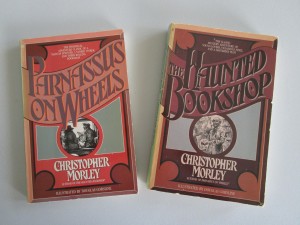 “When you sell a man a book,” says Roger Mifflin, protagonist of these classic book-selling novels, “you don’t sell him just twelve ounces of paper and ink and glue — you sell him a whole new life.”
“When you sell a man a book,” says Roger Mifflin, protagonist of these classic book-selling novels, “you don’t sell him just twelve ounces of paper and ink and glue — you sell him a whole new life.”
Parnassus on Wheels & The Haunted Bookshop
by Christopher Morley
Published in 1917, Parnassus on Wheels tells the tale of Roger Mifflin, a traveling bookseller, who roams farmlands and backwoods with a horse-drawn bookshop, spreading the gospel of books. His faith in the power of the word is boundless. People need books, he insists, even if they don’t know they need them. Along the way he meets Helen McGill, a good-hearted spinster, and they share adventures while slowly falling in love.
The plot sounds simple, and it is. But the story is written with easy grace and the characters are just plain adorable. But what makes the story so appealing, is that Morley wrote it for bibliophiles and his intense love of books and reading permeates every chapter. Reading Roger Mifflin wax lyrical about specific books makes us hunger to read those books ourselves. When I first read Parnassus in my late teens, I jotted down a reading list culled from the book (which I still keep in my copy). Some of the authors he mentions have sustained me ever since.
Your Booklover will intimately relate to this book-reverent tale, because it is as antiquated and quaint as the horse-drawn wagon from which Roger sells his treasures. Today’s focus on instant messaging and publisher’s concern for profits over quality has perhaps made book-loving a relic of the past. But don’t worry, your Book lover, if they are anything like me, is happy to be a dinosaur.
The Haunted Bookshop is a sequel to Parnassus on Wheels. Roger Mifflin and Helen McGill, now wedded, have opened a bookstore in Brooklyn called Parnassus at Home (not The Haunted Bookshop, as the the title seems to hint).
The time is shortly after WWI, and President Woodrow Wilson is soon to sail for Europe to craft the settlement that will create the League of Nations. Into Parnassus at Home enters Aubry Gilbert, a young advertising man, Titania Chapman, a rich debutante sent to work there by her father to learn some life skills, and a disappearing and reappearing copy of Carlyle’s Oliver Cromwell. The book is a bit of a love story, a bit of a thriller, and mostly a paean to books and reading. Roger himself is, once again, an adorable character, if sometimes long-winded on his favorite subject — books, of course.
Why the “Haunted Bookshop” – here’s a quote that will explain:
…that’s why I call this place the Haunted Bookshop. Haunted by the ghosts of books I haven’t read. Poor uneasy spirits, they walk and walk around me. There’s only one way to lay the ghost of a book, and that is to read it.
Booklovers will salivate over the descriptions of Roger’s cluttered but cozy secondhand bookstore and his fire-lit sitting room lined with his most cherished volumes.
My copies have these lovely illustrations –
There are many wonderful editions out there – so start your search now. I won’t judge if you obtain copies for yourself as well. As Henry Ward Beecher said:
When is human nature so weak as in a bookstore?
My Gift for You
I know you’ve just finished off the last of the Thanksgiving leftovers and you’re still languishing in the post-feast euphoria..
But guess what folks?
December begins tomorrow.
Perhaps you’re stuck for gift ideas — but never fear, Book Barmy is here!
I’ve decided my gift to you – my faithful readers — will be ….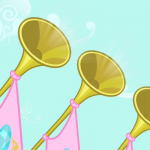
Twelve Days of Book Barmy Gift Ideas
Beginning tomorrow I will post ideas for books, bookish things and literary swag to delight every type of reader on your list – from the Romantic to the Cook – and all those in between. I know your gift list is chock full of friends and family who are just as barmy about books as we are.
So stay tuned. And relax … I’ve got your back.
A Fine Balance by Rohinton Mistry
 Upon opening A Fine Balance, this Balzac epigraph accuses the reader:
Upon opening A Fine Balance, this Balzac epigraph accuses the reader:
“…after you have read this story of great misfortunes, you will no doubt dine well”.
As we head off to share Thanksgiving meals with loved ones – I can’t help but think of those who are not safe, warm or well-fed at this holiday — (yes, I’m just that much fun, be sure to invite me to you next dinner party). Wisely, I keep these thoughts to myself and quietly plot my charity giving for the holidays.
Actually, Thanksgiving is one of my favorite holidays because it’s all about the food, friends and loved ones. But my point (and I do have one, I promise) is that when approaching the abundances of the holidays, I always remember this book, which has stuck with me since I read it almost 10 years ago.
A Fine Balance is one of the finest novels I’ve ever read. Overstatement? Not at all. Simply superb, the beauty and humor of this book is matched only by the awfulness and arbitrariness of life — a “fine balance”. This is a novel that instantly absorbs the reader. Preoccupied with the characters — Ishvar, Om, and Dina, — I cried for them, cheered them and still remember them to this day.
The novel takes place in India during the mid-1970s under Indian Prime Minister Indira Gandhi’s “State of Emergency”. (Obviously, this is before her assassination and after reading this book, perhaps we know why.) The book tells the story of a group of Indian citizens- two tailors, a student and a widow, as they struggle through their lives, how their fates entwined, how their initial distrust for each other blossoms into family of friendship.
Through their encounters, Mr. Mistry shows us the political arena of the time– how bribery and graft prevailed throughout the economy, how political propaganda was staged and how commoners suffered under the “City Beautification Program”.
Mr. Mistry makes no allowances for the western reader and forces us to view India without the rose-colored tint of British teas and painted elephants.
You’ll shake your head at the social issues that plagued India and some which are still evident today, the hopelessness of a caste system, begging as a “profession”, the pavement dwellers, the huge gulf between the rich and poor, how population control programs cruelly spun out of control and how shantytown people lived under the mercy of local rulers. One particular trade that struck me was hair-collecting…you just have to read the book.
OK, I can see you saying this book is not for me, a depressing read if there ever was one. But trust me fellow readers, A Fine Balance is not that. There is much pain and yet much joy in this novel. It shows us there is inherent beauty in just being alive and how our bonds with those we love deliver riches beyond compare. Read this book – you will be changed.
Happy Thanksgiving everyone, hug your loved ones and appreciate the bounty of our lives – we are the lucky ones.


